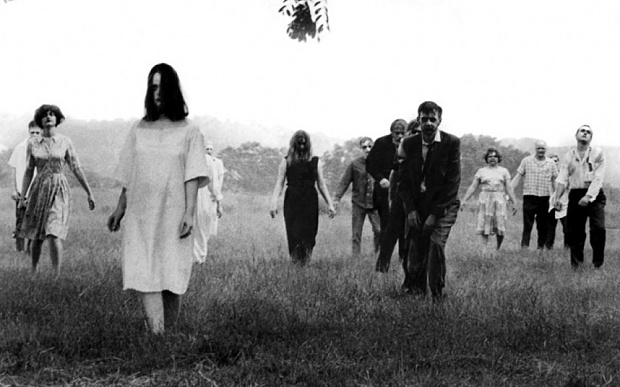What is it with the undead? While other monsters come and go, the zombie never seems to go out of style, exploding into the Hollywood mainstream every few years but otherwise lumbering on in B-movies, constantly mutating to reflect our latest fears and anxieties.
As a child my son was obsessed with Scooby-Doo on Zombie Island, an animated film in which the annoying dog and his friends investigate zombie pirates. A decade on, he puts in long hours shooting zombies on his PlayStation (it’s guilt-free murder, he says – they’re dead already). On TV he loves the BBC3 teen zombie series In the Flesh, where prejudice against the partially deceased becomes a clunky metaphor for intolerance in general, or the hugely popular US series The Walking Dead.
So what is their enduring appeal? In his entertaining new book Zombies on Film, Ozzy Inguanzo traces the history of the zombie from its film debut in the 1932 melodrama White Zombie. Set in Haiti, it was inspired by William Seabrook’s 1929 travelogue The Magic Island, which featured lurid descriptions of supposed voodoo practices. The film was a huge hit, and over the years the formula has proved to be a flexible one: we’ve had Nazi zombies, biker zombies, blaxploitation zombies, dancing zombies (in Michael Jackson’s groundbreaking 1983 Thriller video), Japanese schoolgirl zombies.
The permutations are endless, because in the end zombies are just like us. Only dead.
 Bill Nighy in Shaun of the Dead
Bill Nighy in Shaun of the Dead
They can be funny, too, as Simon Pegg and Nick Frost proved in 2004’s Shaun of the Dead, or Jessie Eisenberg and Woody Harrelson in 2009’s equally funny Zombieland. And even loving, in the unlikely 2013 human/zombie rom-com, Warm Bodies.
The big advantage the undead have over their competitor monsters is that they’re cheap: no expensive costumes, prosthetics or computer effects are needed, and no star names – just a lot of extras in non-speaking roles, making them attractive to innovative directors with little money to spend but a lot of imagination.
It was George A Romero who saved the zombie from B-movie hell with his 1968 film Night of the Living Dead, in which for the first time the recently deceased return with an insatiable appetite for human flesh, as well as some subtle social commentary.
In 1981 Sam Raimi breathed new life into the undead – and the whole horror genre – with his low-budget indie splatter-fest The Evil Dead (1981), while in 2002 Danny Boyle made them a potent way of examining our fears about infection in the wake of Aids, Ebola and ever more potent flu strains in 28 Days Later. (I Am Legend and World War Z continued this theme, with bigger budgets and far less subtlety.)
In computer games, zombies have been a staple since 1994, when the Japanese developer Capcom invented the ‘survival horror’ genre with the hugely popular Resident Evil, which spawned an equally successful film franchise. Paul SW Anderson is due to start shooting the sixth, and possibly final, chapter this month.
It seems our appetite for zombies – and theirs for us – will never decay. As the poster for Night of the Living Dead proclaimed, ‘They won’t stay dead!’

